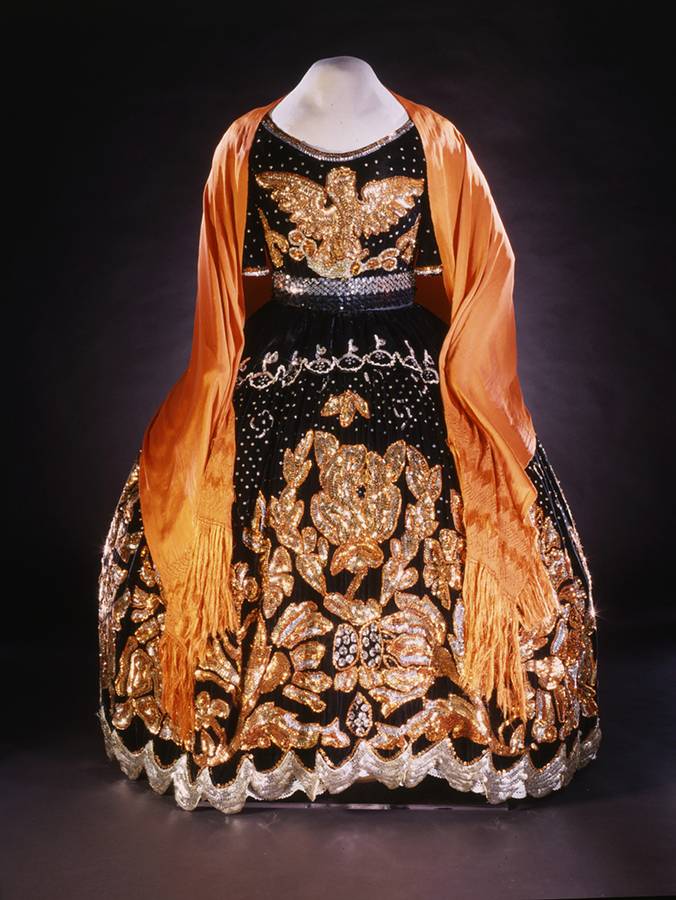 The dress, worn by musician Rosa Fernandez, is a “china poblana,” a style of sequined dress that emerged in Puebla, Mexico in conjunction with the appearance of Mirra, a woman enslaved as a child on the Punjabi coast, and shipped through the Philippines to Acapulco in 1619 and then to Puebla1. Known during her enslavement and then her emancipation as a healer, Mirra or Catalina de San Juan became known for her sequin work, and then her work became one of the iconic images of Puebla and then Mexico2. This is to say, Asian women’s work has shaped the way we understand the Americas and what we understand to be typically Mexican or typically Mexican American. And, I would say, typically American.
The dress, worn by musician Rosa Fernandez, is a “china poblana,” a style of sequined dress that emerged in Puebla, Mexico in conjunction with the appearance of Mirra, a woman enslaved as a child on the Punjabi coast, and shipped through the Philippines to Acapulco in 1619 and then to Puebla1. Known during her enslavement and then her emancipation as a healer, Mirra or Catalina de San Juan became known for her sequin work, and then her work became one of the iconic images of Puebla and then Mexico2. This is to say, Asian women’s work has shaped the way we understand the Americas and what we understand to be typically Mexican or typically Mexican American. And, I would say, typically American.
I bring up the layers embedded in this piece of Southwest Americana to counter the desire to separate the recent 8 killings from the broad threads and patterns in American history.
Asian women’s intimate labor was at issue in 1875 when Congress passed the Page Act, the first federal immigration restriction act passed since the Civil War and the passage of the 13th and 14th amendments. The Act explicitly banned "immoral Chinese women" and used the language of sexual immorality to demonize working women and restrict their mobility. It took more than 125 years and two world wars to end racial restrictions on the movement of Chinese women across U.S. borders.
Most scholars in Asian American Studies emphasize that policies and attitudes in the United States have made Asians - regardless of their documented coerced presence in the Americas since at least the 1580s - "alien citizens" and "perpetual foreigners," like so many other long-term residents of the continent to the East of Asia and West of Africa and western Europe3.
The established response in Cherokee County to the killings in Atlanta ask us as members of a university to do far more than recognize the recent presence of Asian neighbors and residents. Rather, we need to account for the many ways tacit attitudes regarding who belongs and who is an immigrant shape our policies and understandings of our body politic. We also need policies that enhance living and working conditions for the most vulnerable among us.
- John Mckiernan-Gonzalez
- Roshni Rustomji-Kerns (2002) Mirrha-Catarina de San Juan: From India to New Spain, Amerasia Journal, 28:2, 28-37, DOI: 10.17953/amer.28.2.4114207112q54204
- Mr. Tenis, dress for Rosita Fernandez, San Antonio, Texas. National Museum of American History, 1960s, NMAH. Accession number 2001.0130, https://americanhistory.si.edu/collections/search/object/nmah_1201174
- Mae Ngai, Impossible Subjects: Illegal Aliens in the Making of Modern America (Princeton: Princeton University Press, 2005)
